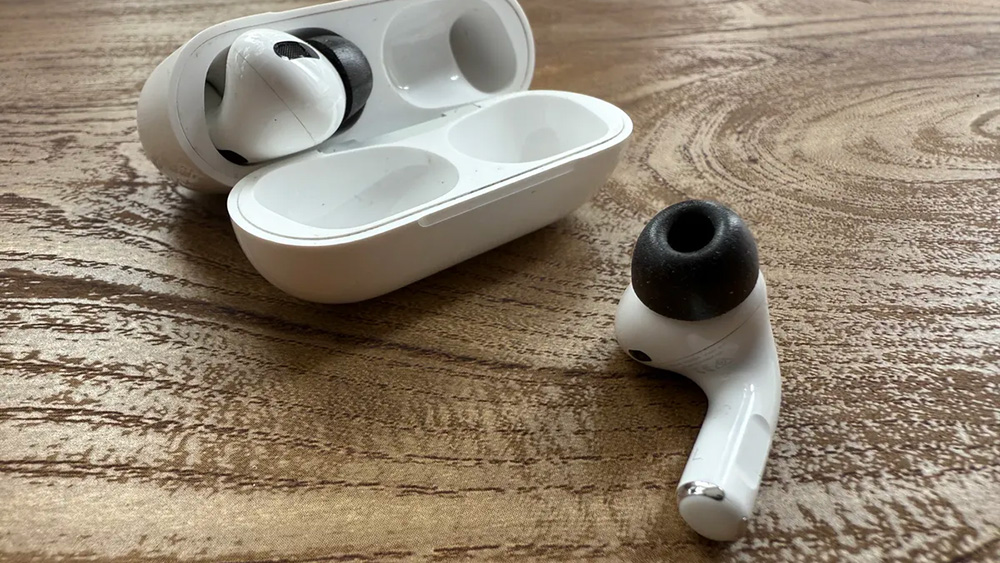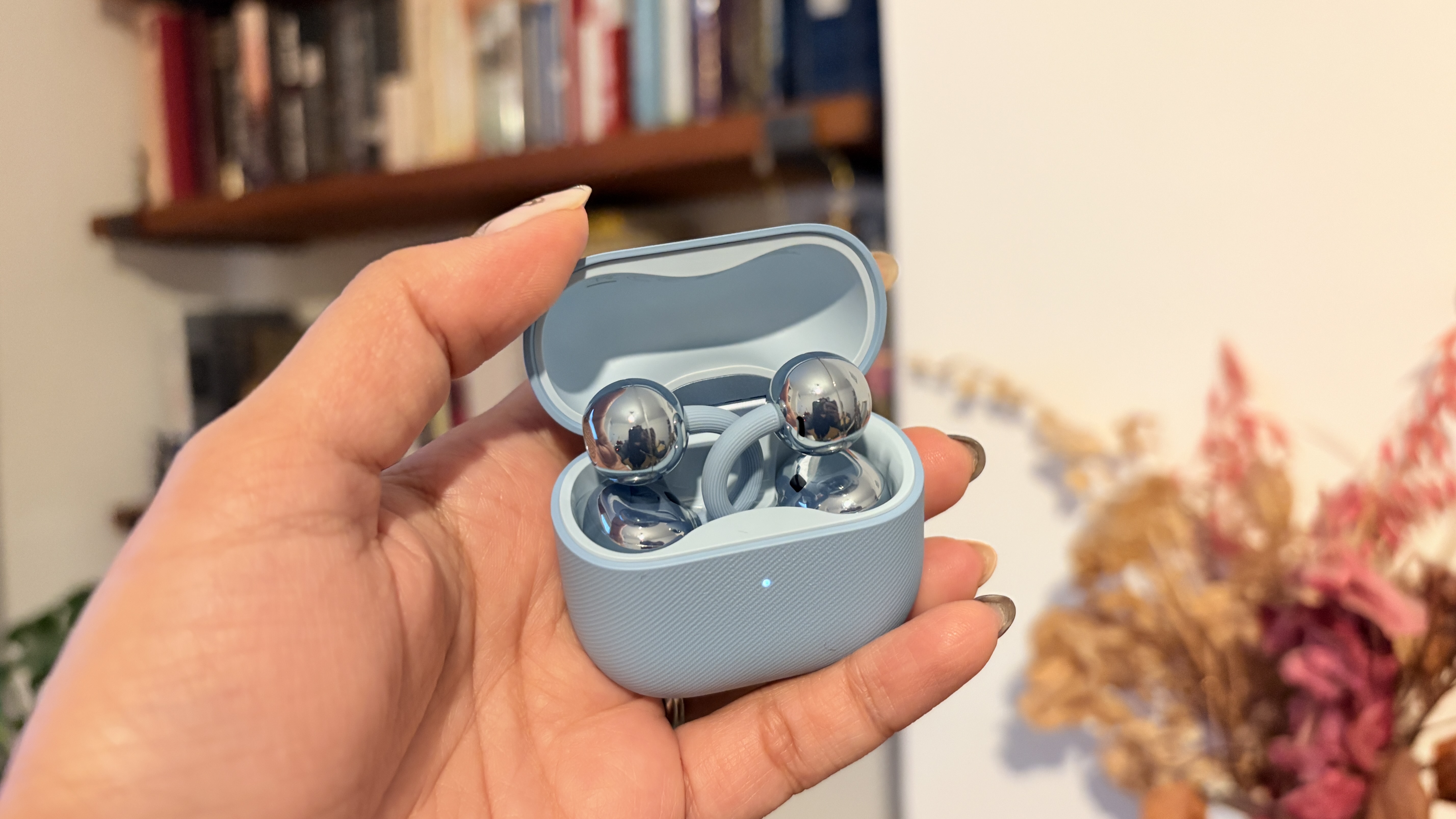AirPods started hurting my ears, until one simple change fixed everything
All of a sudden, my ears decided they’d had enough...

For the past 25 years of my life I’ve rarely left the house without a pair of headphones stuck in my ears. But then, all of a sudden, those ears decided they’d had enough.
I hardly had to wear my wireless earbuds of choice, the Apple AirPods Pro, for more than half an hour or so and my ears would start to complain, feeling sore and irritated for days afterwards.
Naturally, the first thing I did was what any normal person would do: I turned to the internet for help. Dr Google provided me with plenty of potential reasons for the soreness – prolonged use (probably guilty), listening at high volume (definitely guilty), poor fit (why only now?), and material sensitivity or allergy (ditto) – but no genuinely helpful solutions.
Having tried different sizes of silicone eartip, keeping the volume down, and only wearing them for very short periods at a time, I was still having the same issues.
Doctor doctor
Fortunately, I’m in a line of work that means I often have multiple pairs of earbuds kicking about, so I tried a few others to see if there was something specific about AirPods that caused the problem.
But most other pairs also caused the same issues. For a while I could use my KEF Mu3 as long as it wasn’t for too long, but of course they eventually conked out on me and I had to chuck them in the bin.
So I bit the bullet and booked an appointment to see my doctor. He peered into my ears and found nothing unusual to report.
The latest hi-fi, home cinema and tech news, reviews, buying advice and deals, direct to your inbox.
I figured my time using in-ear headphones was over and went about trying to find a pair of over-ears that would fold down as small as possible; I didn’t want to have to carry a bag with me everywhere I went just to stash my headphones in when I wasn’t using them.
Marshall’s Major V seemed to fit the bill. Their on-ear design is about as compact as it gets, and both earcups fold up inside the headband, but if I wasn’t wearing a coat with a fairly roomy pocket to put them in, they were still a bit of a pain to carry around.
The memory remains

I decided to have one last go at finding a solution to my earbud issues and stumbled upon Sonicfoam, a company that makes memory foam eartips for various brands of in-ear headphones.
They’re actually designed to improve sound isolation, but I thought perhaps the softer material would be gentler on my lugs.
There are various different SF Models available, with a long compatibility list on the company’s website that will let you find the right ones to fit your particular pair, including many that feature on our list of the best wireless earbuds: Bose, B&W, Sennheiser and Sony, to name a few.
Just be aware that some of them will stop your buds from fitting in their charging case, although those are indicated on the list.
Each SF Model comes in small, medium, and large sizes, but if you aren't sure which you need, some offer tester packs (£9.99 / $11.99 / AU$15.99) that include a single pair of all three sizes.
If you do know which size you want, a pack of 10 pairs costs £13.99 / $14.99 / AU$19.99 on Amazon.
If you’ve never used memory foam before, the idea is you squash the tips down gently with your fingers before sticking each bud in your ear, and the foam then expands to fill the available space, creating a complete seal.
Having tried all three sizes on my AirPods, there didn’t seem to be much difference between the small and medium ones, but I figured the smaller the better in terms of avoiding too much pressure on my ear canals.
Top tips
I noticed the difference almost immediately. With the Sonicfoam tips replacing the standard silicone ones, I could wear my AirPods without triggering any discomfort.
If I’m just popping out to the supermarket, I occasionally try to give my ears a rest by using the Marshall Major V instead, and if I wear the earbuds for too long over a short period, some irritation does return – but that has only happened once in the six months since I switched. It’s fair to say the improvement has been pretty drastic.
Sonicfoam says each pair of tips only lasts four weeks because memory foam degrades over time, but as somebody who doesn’t commute or really wear them much at home, I’ve only felt the need to replace them once so far.
While writing this piece, I’ve discovered other brands, such as Comply, that also make memory foam tips for various pairs of buds, including the AirPods Pro, Sony WF-1000XM5 and Sennheiser Momentum True Wireless.
They’re more expensive (prices start at around £20 per three-pack in the UK), but each pair is supposed to last even longer (up to three months of use) and Comply claims that they put 50 per cent less pressure on your ear canal than others.
I might give a pair of those a try next time and see if they’re even better, but for now I’m very happy with the ones I’ve got.
Of course, I should point out that the closest I’ve come to qualifying as a doctor is when I beat my niece at a game of Operation at her fourth birthday party (she was rubbish at it), so while none of this should be taken as legitimate medical advice, if you’ve suddenly found that your ears and your buds no longer get on, it might be worth taking a punt on memory foam.
MORE:
Best wireless earbuds: top pairs tested by our reviewers
AirPods Pro 3 rumours: everything we know so far and 5 features we want from Apple's next flagship wireless earbuds
How to store records: 9 tips for keeping your vinyl tip-top
Tom Wiggins is a freelance writer and editor. A lifelong fan of Brighton & Hove Albion F.C., his words have graced a variety of respected sporting outlets including FourFourTwo, Inside Sport, Yahoo Sport UK and In Bed With Maradona. He also specialises in the latest technology and has contributed articles to the likes of TechRadar, TrustedReviews, ShortList, Wareable, Stuff, Metro, and The Ambient.
You must confirm your public display name before commenting
Please logout and then login again, you will then be prompted to enter your display name.

